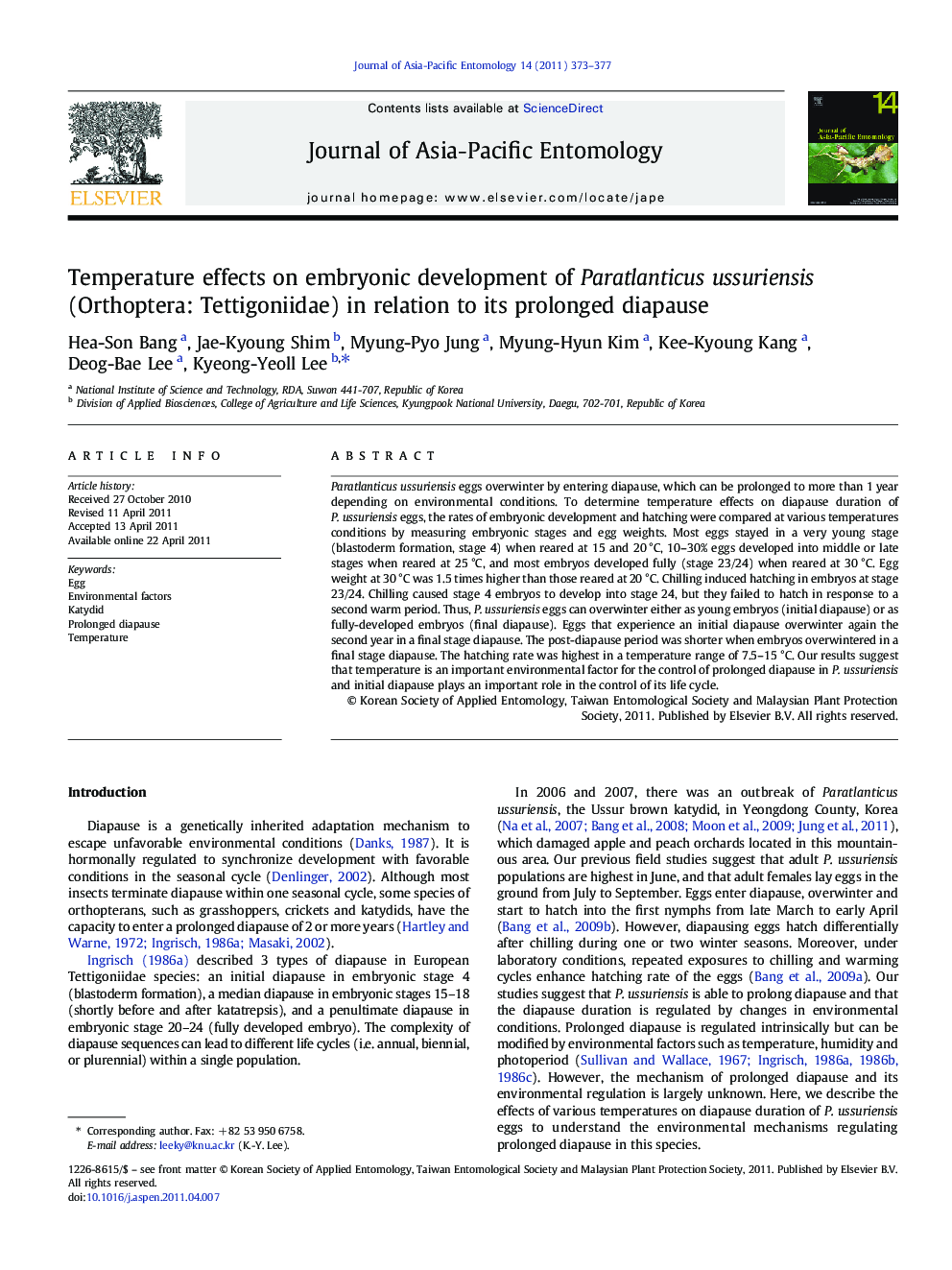| کد مقاله | کد نشریه | سال انتشار | مقاله انگلیسی | نسخه تمام متن |
|---|---|---|---|---|
| 4524734 | 1323588 | 2011 | 5 صفحه PDF | دانلود رایگان |

Paratlanticus ussuriensis eggs overwinter by entering diapause, which can be prolonged to more than 1 year depending on environmental conditions. To determine temperature effects on diapause duration of P. ussuriensis eggs, the rates of embryonic development and hatching were compared at various temperatures conditions by measuring embryonic stages and egg weights. Most eggs stayed in a very young stage (blastoderm formation, stage 4) when reared at 15 and 20 °C, 10–30% eggs developed into middle or late stages when reared at 25 °C, and most embryos developed fully (stage 23/24) when reared at 30 °C. Egg weight at 30 °C was 1.5 times higher than those reared at 20 °C. Chilling induced hatching in embryos at stage 23/24. Chilling caused stage 4 embryos to develop into stage 24, but they failed to hatch in response to a second warm period. Thus, P. ussuriensis eggs can overwinter either as young embryos (initial diapause) or as fully-developed embryos (final diapause). Eggs that experience an initial diapause overwinter again the second year in a final stage diapause. The post-diapause period was shorter when embryos overwintered in a final stage diapause. The hatching rate was highest in a temperature range of 7.5–15 °C. Our results suggest that temperature is an important environmental factor for the control of prolonged diapause in P. ussuriensis and initial diapause plays an important role in the control of its life cycle.
Schematic diagram of embryonic diapause of P. ussuriensis. Numbers in the middle bar indicate the months of two years. The upper part indicates annual life cycles and the bottom part indicates biennial life cycles in relation to diapause of P. ussuriensis.Figure optionsDownload as PowerPoint slideResearch highlights
► Paratlanticus ussuriensis eggs overwinter by entering diapause, which can be prolonged to more than one year depending on environmental conditions.
► Most eggs stayed in a very young stage (blastoderm formation, stage 4) when reared at 15 and 20 °C, 10-30% eggs developed into middle or late stages when reared at 25 °C, and most embryos developed fully (stage 23/24) when reared at 30 °C.
► P. ussuriensis eggs can overwinter either as young embryos (initial diapause) or as fully-developed embryos (final diapause). Eggs that experience an initial diapause overwinter again the second year in a final stage diapause.
► Our results suggest that temperature is an important environmental factor for the control of prolonged diapause in P. ussuriensis and initial diapause plays an important role in the control of its life cycle.
Journal: Journal of Asia-Pacific Entomology - Volume 14, Issue 3, September 2011, Pages 373–377